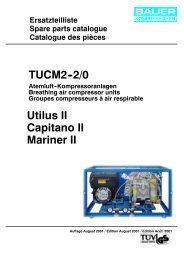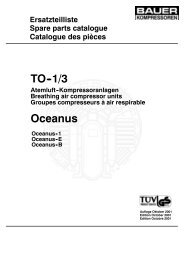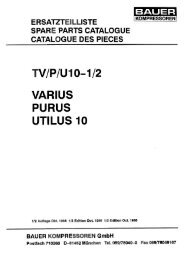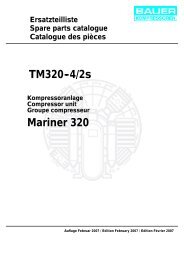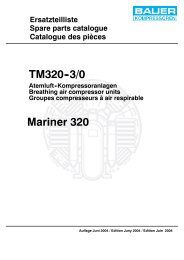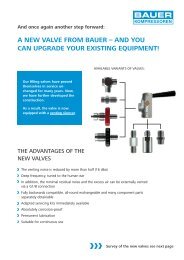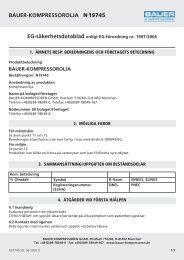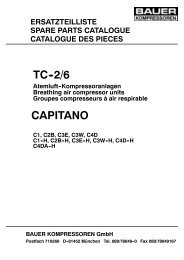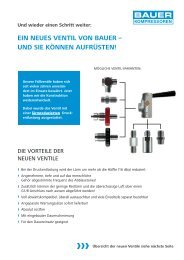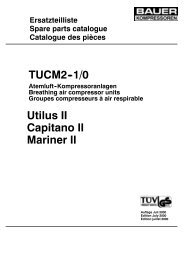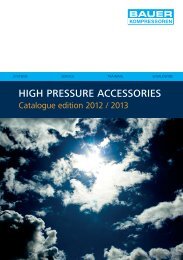Operator's Manual High Pressure Breathing Air Compressors
Operator's Manual High Pressure Breathing Air Compressors
Operator's Manual High Pressure Breathing Air Compressors
Create successful ePaper yourself
Turn your PDF publications into a flip-book with our unique Google optimized e-Paper software.
10.2.2. Oil and water separator<br />
The air leaving the final stage is cooled in the after--cooler to<br />
approx.10 to 15°C (18 to 27°F) above ambient temperature and<br />
then enters the oil and water separator (Fig. 29). The oil and water<br />
separator works by means of a sintered filtermicro--cartridge<br />
(1), reliably separating liquid oil and water particles from the<br />
compressed air.<br />
44<br />
CAUTION<br />
The oil and water separator is subject to dynamic<br />
load. It is designed to withstand up to 85,000 load<br />
cycles at a max. allowable pressure fluctuation<br />
range of 350 bar. (1 load cycle = 1 pressurization, 1<br />
depressurization). After reaching the max. number<br />
of load cycles, the oil and water separator should be<br />
renewed.<br />
The maximum recommended amount of four load cycles per<br />
hour should not be exceeded.<br />
If it is possible to regulate the operation of the unit to such a degree<br />
as to achieve approx. four load cycles per hour, in our opinion<br />
this would be an optimum between usage of the unit and actual<br />
life of the oil and water separator.<br />
10.2.3. Purifier<br />
Fig. 29 Oil and water separator<br />
Operator’s <strong>Manual</strong><br />
The filter housing consists of a high--strength anodized aluminium alloy pipe with 100 mm external diameter. Both ends are provided<br />
with fine threads on the inside.<br />
The screw--in filter bottom contains inlet and outlet. For connector threads see specifications, Technical Data, 10.4.<br />
The upper screw connection contains a pressure resistant bushing for the electrical connections. The co--axial cable which leads<br />
from the sensor to the control unit is connected to the BNC connector located there.<br />
For description of the electrical operation refer to chapter 10.2.5.



